If you want to know about the Roman architecture or Indus valley civilization or evolution of Vedic civilization, please click the link.
Hindu temple architecture is a style of architecture that has developed over thousands of years in India and is characterized by its elaborate and ornate designs, intricate carvings, and symbolism. The architecture of Hindu temples reflects the beliefs, values, and cultural heritage of Hinduism, which is one of the oldest and most diverse religions in the world.
- Hindu worship is embodied in the concept of DARSHAN or experiencing the divine.
- Since all Hindu home usually have a small shrine or puja room for daily prayers, Hindus generally go to temples only on auspicious occasions or during religious festivals.
- Hindu temples also do not play a crucial role in marriages and funerals, but it is often the meeting place for religious discourses as well as bhajans and kirtans.
1) History of temples
- In the Vedic period there were no temples.
- The main object of worship was FIRE that stood for God. This holy fire was lit on a platform in the open air under the sky, and oblations were offered to the fire.
- It is not certain when exactly the Indo- Aryans first started building TEMPLES for worship. The scheme of building temples was perhaps a concomitant of the idea of idol worship.
2) Location of temple
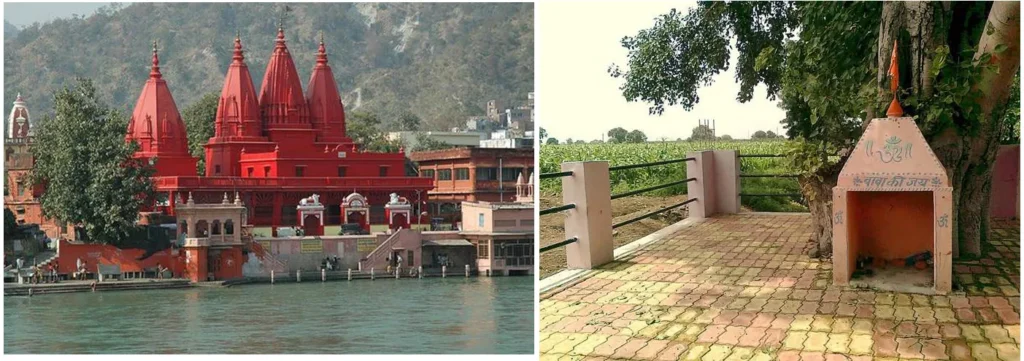
- As the race progressed, temples became important because they served as a sacred meeting place for the community to congregate and revitalize their spiritual energies.
- Large temples were usually built at picturesque places, especially on riverbanks, on top of hills, and on the seashore.
- Smaller temples or open-air shrines can crop up just about anywhere – by the roadside or even under the tree.
- Holy places in India are famous for its temples. Indian towns – from Amarnath to Ayodha, Brindavan to Banaras, Kanchipuram to Kanya Kumari – are all known for their wonderful temples.
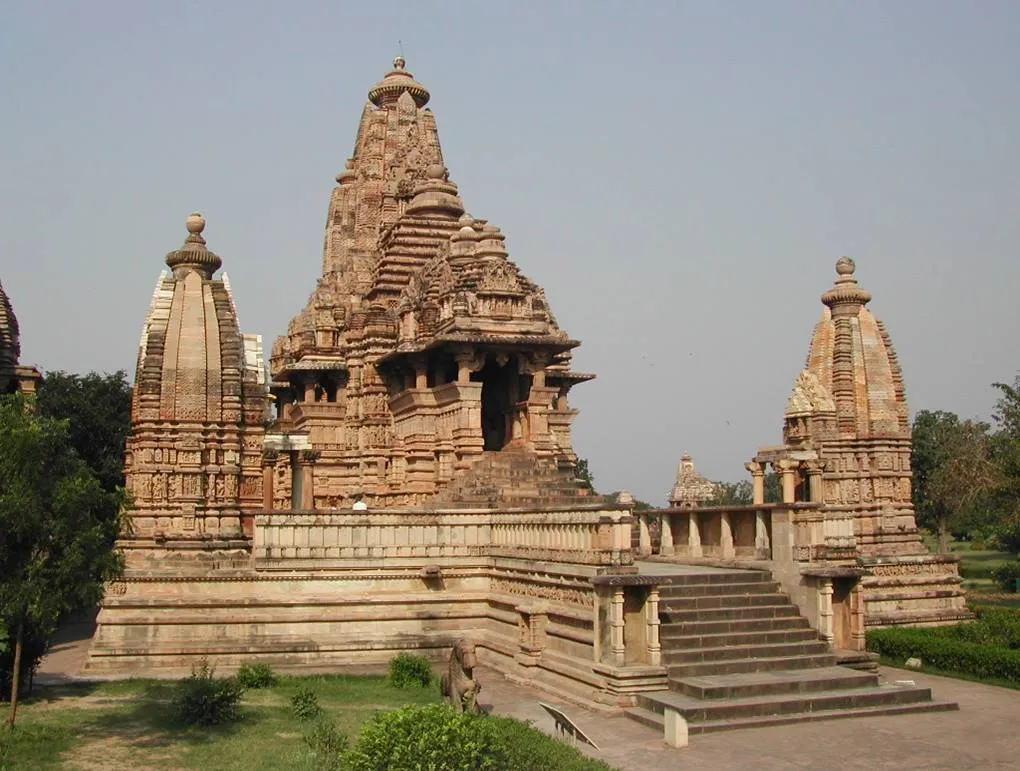
4) Components of Hindu Temple
i) Sanctum / Garbagriha

- It is a small chamber or cella with decorated door frame, within which the image of the diety is installed.
- It is generally square in plan and elevated on a plinth.
- It is also surrounded by an ambulatory passage known as Pradakshina Path.
ii) Mandapa
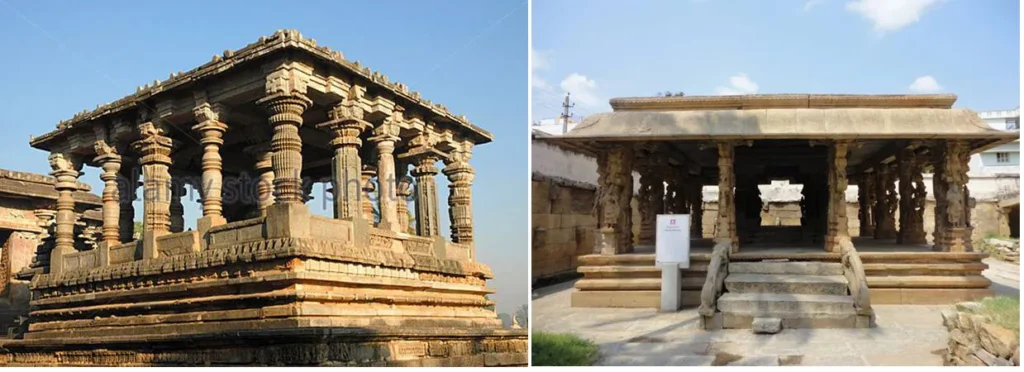
- It is a hall meant to shelter devotees and provide a space for more public rituals.
- It is generally open on three sides, with ornate pillars supporting the roof, which is always much lower than shikhara (Garbhagriha).
- A temple may have more than one mandapa with separate functions of each: Nat Mandir (Dedicated to Dance) Kalyana Mandapa (For divine marriage ceremonies) Pragriva/ Arsha Mandapa (Porch) Bogh Mandapa (Langar Hall) Jagmohan Mandapa (Meeting Hall)
iii) Gopuram

- The temple complex has an ornate significant entrance doorway.
iv) Kund (Tank)
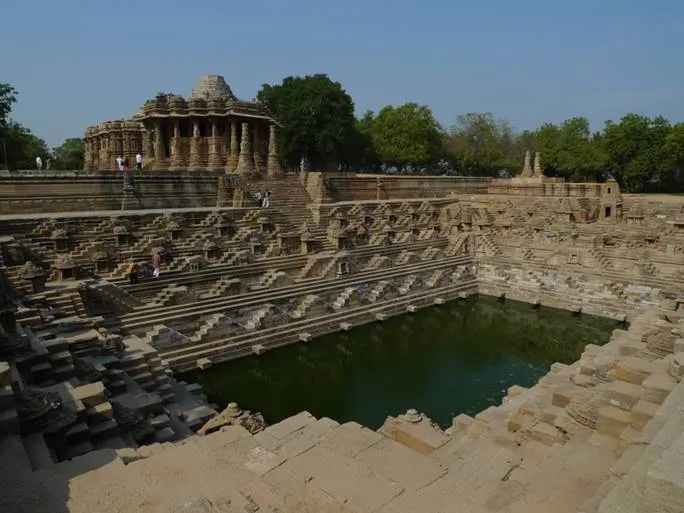
- Presence of water is used in ritual cleansing and consecration rites.

5) Temple plan
A Hindu temple design follows a geometrical design called vastu–purusha-mandala.
- Mandalameans circle
- Purushais universal essence at the core of Hindu tradition
- Vastumeans the dwelling structure
- The design lays out a Hindu temple in a symmetrical, self-repeating structure derived from central beliefs, myths, cardinality and mathematical principles.
- The square is considered divine for its perfection and as a symbolic product of knowledge and human thought, while circle is considered earthly, human and observed in everyday life.
- The temples face sunrise, and the entrance for the devotee is typically this east side. The mandala pada facing sunrise is dedicated to Surya deity (Sun).
- The east and north faces of most temples feature a mix of gods and demi-gods, while west and south feature demons and demi-gods related to the underworld.
Components of Temple Plan
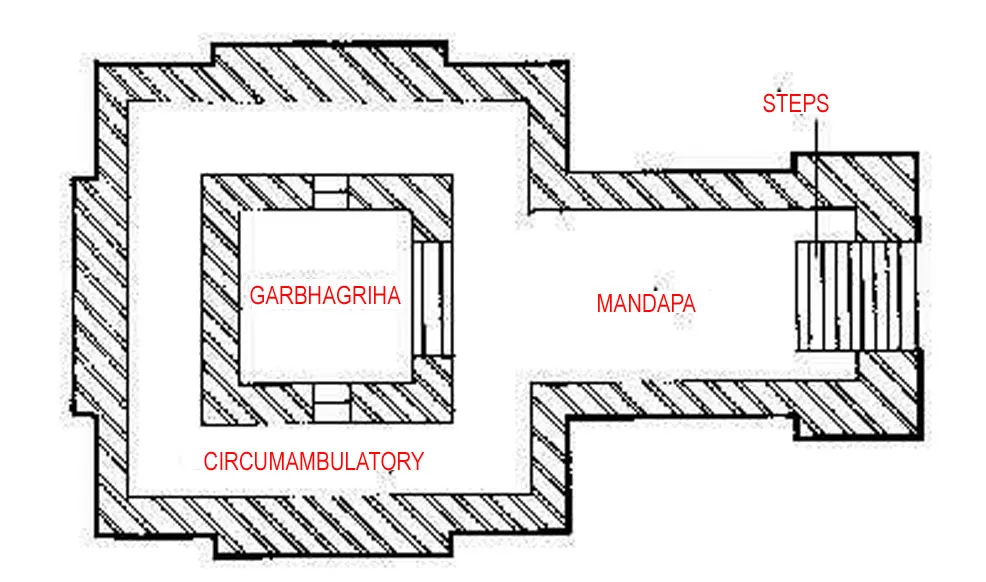
Evolution Of Temple Plan
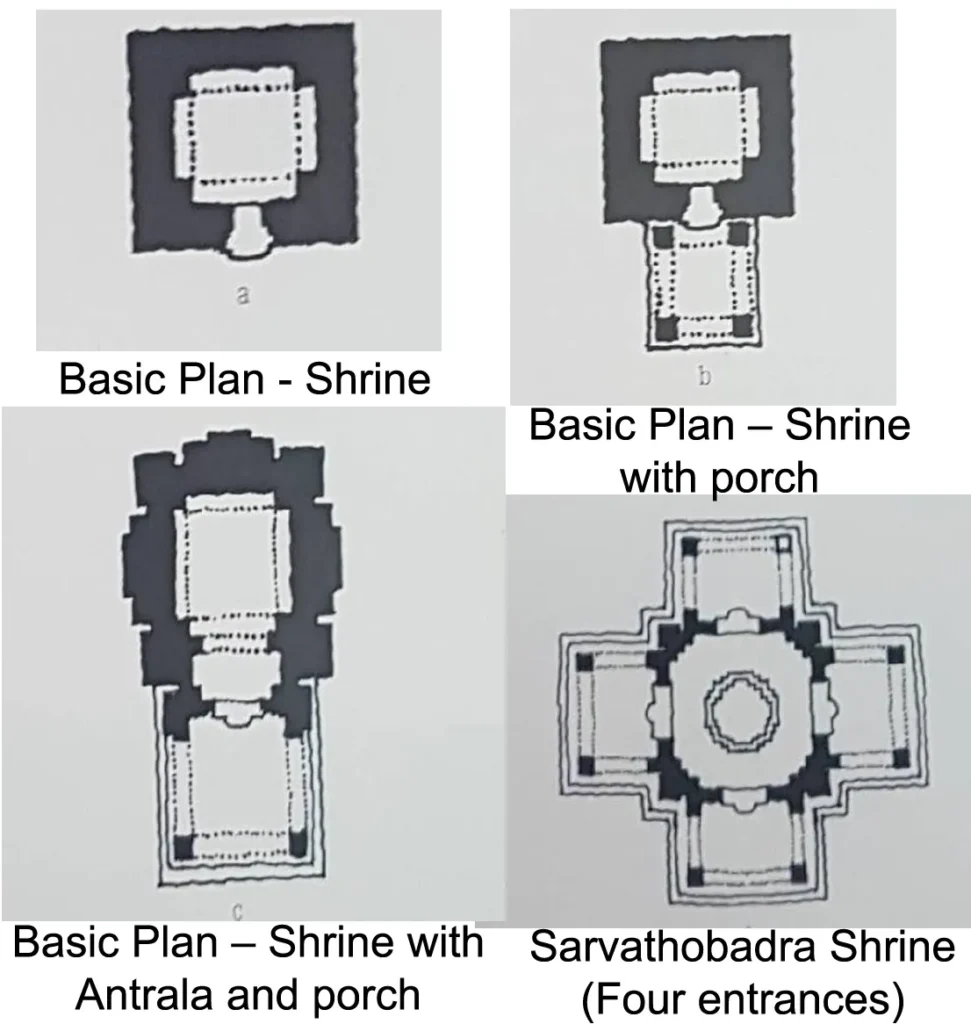

6) Dravidian / southern style
i) Pallava style – AD (600–900) – Rock Cut Temple + Rathas
ii) Chola style – AD (848–1280) – Garbhagriha + Ganas
iii) Pandya style – Gopuram + Temple complex
iv) Vijayanagar style – AD (1343–1565) – Yali columns + Ornately Pillared Mandapa + Islamic Arch. Influence
i) Pallava style {AD (600–900)}
- Pallavas were one of the pioneers of south Indian architecture.
- The earliest examples of temples in the Dravidian style belong to the Badami Chalukya-Pallava period.
- The earliest examples of Pallava constructions are rock-cut temples dating from 610 – 690 CE and structural temples between 690 – 900 CE.
- The greatest accomplishments of the Pallava architecture are the rock-cut temples at Mahabalipuram. There are excavated pillared halls and monolithic shrines known as RATHAS in Mahabalipuram.
- Early temples were mostly dedicated to Shiva.
- They started construction of rock cut temples without using mortar, bricks etc.
- RATHAS: Small shrines carved out of a monolithic rock. In general Ratha is known as chariot used for carrying the image of the deity during religious procession. But here in pallava style it commonly refers to a monolithic shrine which contains all the essential features of a temple including domed storey to shikhara.
- Feature – Rock Cut, Rathas

Ratha
- It is the monolithic replica of the main shrine, may be portable shrine mounted on a horse drawn chariot.
- The diety is taken for the procession around the city on auspicious days.
- Example – Ratha Yatra In Puri
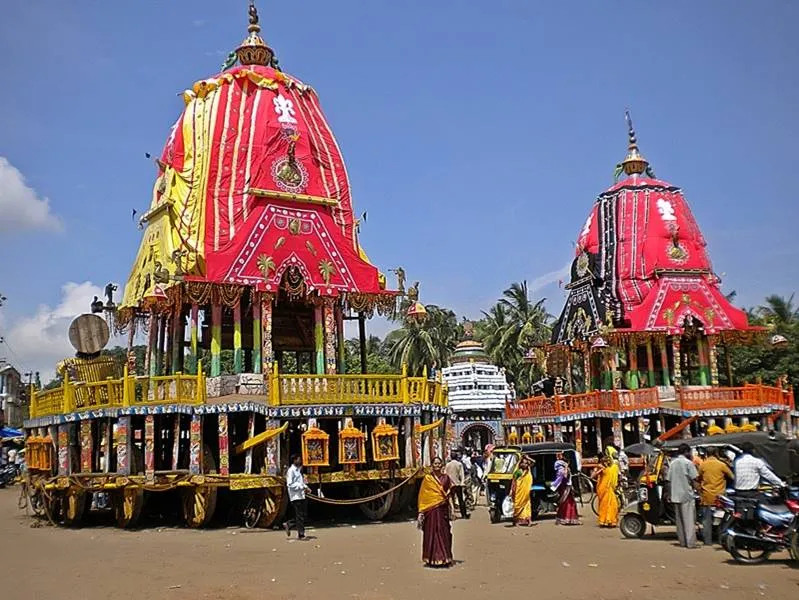
Refer – Pancha Ratha at MAmlapuram
Shore temple, Mahabalipuram
(Structural Example)
- The Shore Temple at Mahabalipuram, built during the reign of Narasimha 11 is on the seashore.
- Facing east, the temple has a small gopuram with a pradakshina path between the temple and the outer wall.
- The main shrine contains a broken fluted Shiva linga.
- The outer walls of the temple are covered with carved panels separated by lions. Many of these have been destroyed by the dashing waves of the sea. Behind this shrine is another cell with a figure of Vishnu reclining on the serpent sesha.
- Next to this and facing west is another shrine dedicated to Shiva.
- Opposite the Temple is the Balipitha or altar.
- The courtyard is surrounded by rows of Nandis. Rocks carved with the eight-armed Durgaon a lion can also be seen near the temple.

ii) Chola style {AD (848–1280)}
- The Cholas were prolific temple builders.
- The dvarapalas, or guardian figures, at the entrance to the mandapa, or hall which started from the Pallava period became a unique feature of the Chola Temples.
- The Dravidian Style got fully developed after a transition from the rock cut structures of the Pallava Period.
- Early Chola temples at the Bank of river Kaveri were smaller and brick made, in comparison to the colossus buildings of the Imperial Cholas.
- The temples of the Imperial Cholas are covered with exquisite well composed sculptures and frescoes.
- Largest and tallest of all Indian temples i.e., Shiva Temple of Thanjore was built in Chola Period.
- GANAS, among the sculptures at the temple, are the most memorable figures made in Chola temples.
- Main Features – Main Shrine, Ganas, Starting of Entrance Gopuram
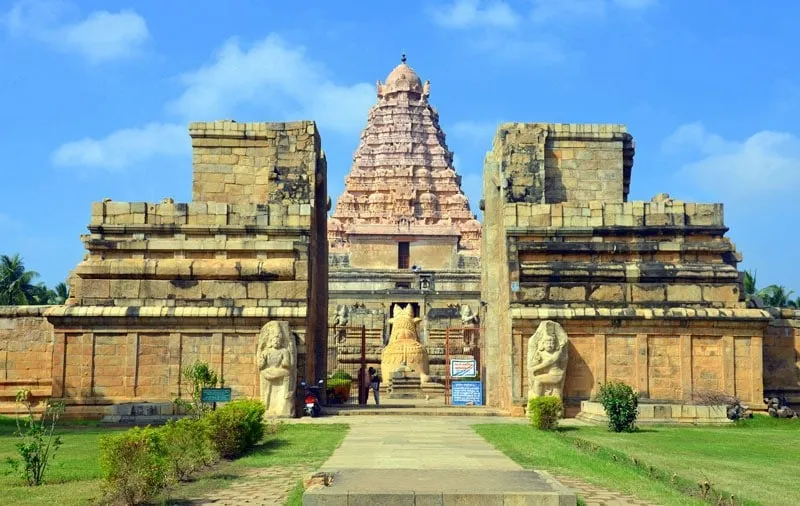
Shiva / Brihadishwara / Rajarajeswara Temple of Thanjore
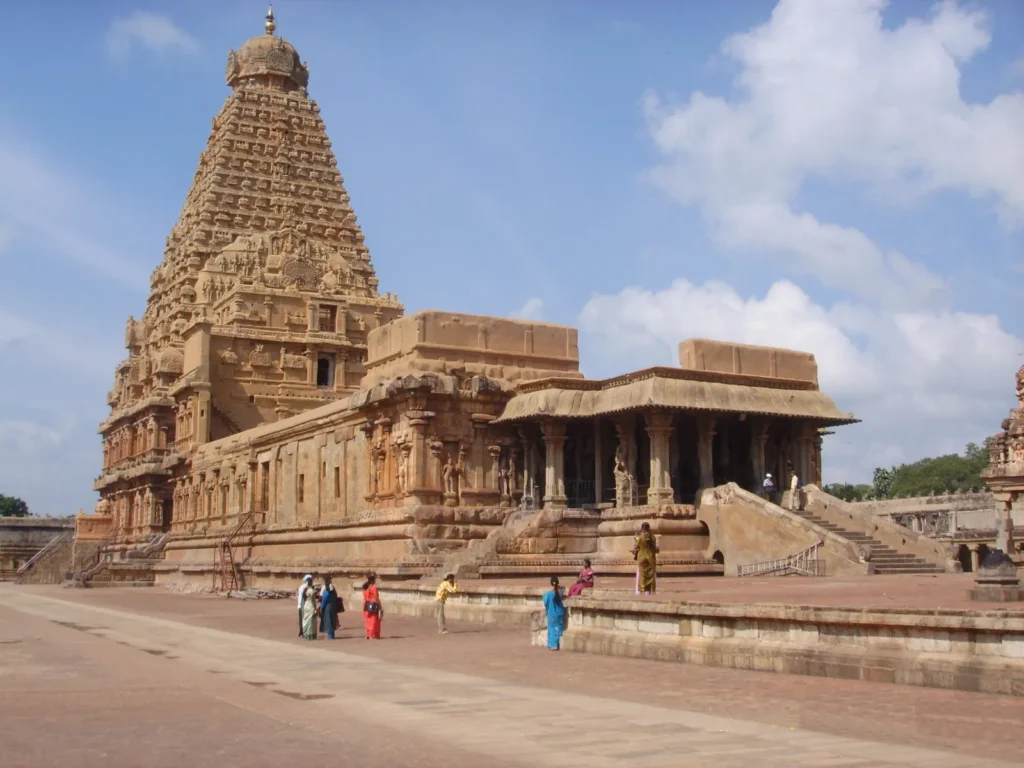
- Constructed in granite, the main structure of the temple has a square base about 53 metres high and its lofty shikhara of thirteen successive storeys is 57.7 metres high.
- A huge stone dome nearly 8 metres high and weighing about 81 tons crowns the shikhara.
- The temple from the top of the base is covered with exquisite sculptures and mouldings.
- The plinth is covered with inscriptions in Tamil.
- The niches on three sides of the main shrine contain idols of various gods and goddesses.
- The gopuram on the entrance gates are decorated with beautiful sculptures.
- The temple stands in a spacious enclosed courtyard and pavilion with one of the largest monolithic Nandis (6 metres long, 2.6 metres broad and 307 metres high) in South India, a large assembly hall and a pillared portico.
iii) Pandya style
- Rock cut and structural temples are significant part of pandyan architecture.
- Vimana, mandapa and shikhara are some of the features of the early Pandyan temples.
- Groups of small temples are seen at Tiruchirapalli district of Tamil Nadu.
- The Shiva temples have a Nandi in front of the maha mandapa.
- In the later stages of Pandyas rule, finely sculptured idols, portals of temples or gopurams on “Vimanas” were developed. GOPURAMS are the rectangular entrance and portals of the temples. The portions above the entrance is pyramidal in shape. Gradually gopurams were given more importance than Shikharas.
- Meenakshi Temple in Madurai and Nellaiappar Temple in Tirunelveli were built during the reign of the Pandyas.
- Main Feature- Gopuram, Temple Complex
Meenakshi temple madurai

- The temple complex is divided into a number of concentric quadrangular enclosures contained by high masonary walls.
- It is one of the few temples in Tamil Nadu to have four entrances facing four directions.
- Vishwantha Nayaka allegedly redesigned the city of Madurai in accordance with the principles laid down by Shilpa Shastras relevant to urban planning.
- Ancient Tamil classics mention that the temple was the center of the city and the streets happened to be radiating out like LOTUS and its petals.
- The complex is in a compound of 45 acres (180,000 m2)
The Meenakshi Nayakkar Mandapam (“Hall of 1000 pillars“) has two rows of pillars carved with images of YALI (mythological beast with body of lion and head of an elephant), commonly used as the symbol of Nayak power.
iv) Vijaynagar style {AD (1343–1565)}
- An aspect of Vijayanagara architecture that shows the cosmopolitanism of the great city is the presence of many secular structures bearing Islamic features. The concentration of structures like pavilions, stables and towers suggests they were for use by royalty.
- Their style was a combination of the styles developed in South India in the previous centuries. In addition, the Yali columns (pillar with charging horse), balustrades (parapets) and ornate pillared manatapa are their unique contribution.
- Its stylistic hallmark is the ornate pillared Kalyanamandapa (marriage hall), Vasanthamandapa (open pillared halls) and the Rayagopura (tower).
- Artisans used the locally available hard granite because of its durability.
- The “Great Platform” (Mahanavami dibba) has relief carvings in which the figures seem to have the facial features of central Asian Turks who were known to have been employed as royal attendants.
- Main Feature – Yali columns, Ornately Pillared Mandapa, Islamic Arch. Influence
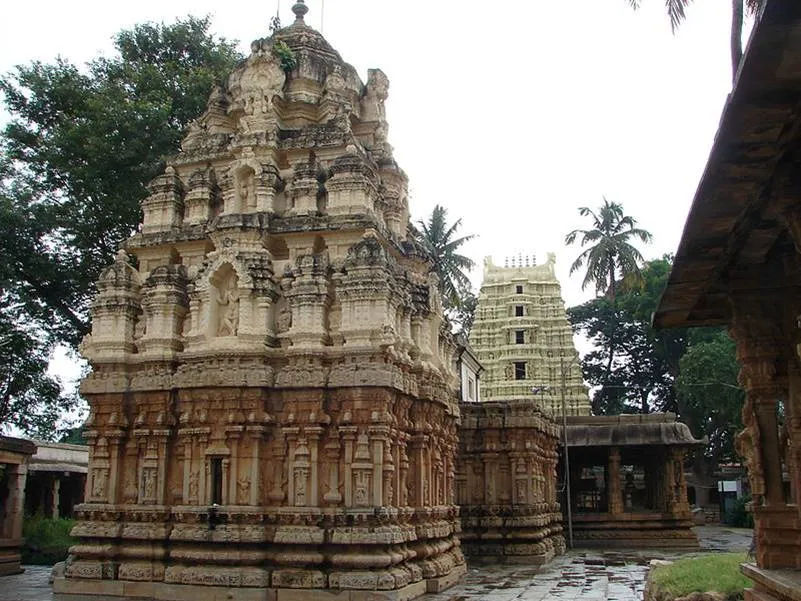
In conclusion, the evolution of Hindu temple architecture reflects the rich cultural heritage of India and its deep roots in Hinduism. Over the centuries, Hindu temples have served as centers of worship, artistic expression, and cultural preservation, and continue to be revered by millions of people around the world today.
An excellent effort in compilation of historic/ Architectural/ religious aspects of Indian hidu temple architecture!!!
Keep up the good effort.